Embarking on a cosmic journey of discovery, we delve into the profound mysteries that encompass our understanding of the cosmos. Let’s Explore The Basic Knowledge Of Space: Where the Universe Encompasses Everything That Exists, Including All Matter, Energy, Space, and Time. Estimated to Be Around 13.8 Billion Years Old, It Contains Billions of Galaxies, Each of Which Can Contain Billions of Stars.

It is believed that the universe was created billions of years ago in an explosion. The explosion scattered gas and matter to form galaxies, stars, and planets. Since ancient times, the Universe has been a mystery for humankind. Astronomers have recorded their observations for centuries. Many astronauts have been sent to explore planets and outer space with the help of space shuttles. These missions have greatly increased our knowledge about the Universe.
The Epic Genesis of the Cosmos: Unraveling the Origins of the Universe!
The current scientific theory of the origin of the universe is the Big Bang theory. Around 14 billion years ago, the Universe was born. Initially, it was a small fireball ( even smaller than a pinhead ) and hotter and denser than anything ever known. The small fireball exploded and everything in the universe formed from this tiny particle. Since then, the Universe has been growing and expanding.
At this time, the universe was incredibly hot and dense, and it rapidly expanded and cooled down. As it cooled, subatomic particles formed, and then atoms, which eventually led to the formation of stars and galaxies.
The early universe was filled with a hot, dense plasma of particles, which eventually cooled enough for neutral atoms to form. This allowed cosmic microwave background radiation to be released, which can still be detected today and is considered one of the strongest pieces of evidence for the Big Bang.
Over time, the universe continued to expand and cool, and structures such as galaxies and clusters of galaxies formed. Scientists have been able to observe and study these structures using a variety of techniques, including telescopes and satellites.
While the Big Bang theory is the current best explanation for the origin of the universe, there are still many unanswered questions and areas of research, including the nature of dark matter and dark energy, and the possible existence of a multiverse.

What Is The Universe Made Up Of?
More than 95% of the vast span of the Universe is composed of dark energy and dark matter and the rest is made up of a mixture of gases. Hydrogen is the dominant gas. It accounts for almost 78% of the total composition of gases. Helium accounts for 20%, while various other gases make up the rest 2%.
Energy is also an important component of the universe. Light, for example, is a form of electromagnetic energy that is emitted by stars and other sources. Other forms of energy in the universe include thermal energy, kinetic energy, and potential energy.
Dark matter is a type of matter that does not interact with light and cannot be directly observed, but its presence is inferred from its gravitational effects on visible matter. Scientists estimate that dark matter makes up about 27% of the total mass of the universe.
Dark energy is a type of energy that is thought to be responsible for the observed accelerating expansion of the universe. Like dark matter, dark energy cannot be directly observed, but its effects can be detected through its influence on the expansion of the universe. Scientists estimate that dark energy makes up about 68% of the total energy density of the universe.
In summary, the universe is made up of matter, energy, dark matter and dark energy, which together make up the visible and invisible components of the cosmos.

What Do You Know About The Big Bang?
The Big Bang was a massive explosion that formed the Universe about 14 billion years ago. Astronomers have not yet discovered any reason behind the explosion. However, the explosion was so powerful that the Universe is still expanding at a constant speed.
One of the strongest pieces of evidence for the Big Bang is the cosmic microwave background radiation, which is a form of electromagnetic radiation that was emitted about 380,000 years after the Big Bang and can still be detected today. Other evidence supporting the Big Bang theory includes the observed abundance of light elements and the large-scale structure of the universe.
In the early stages of the universe, it was filled with a hot, dense plasma of particles. As the universe expanded and cooled, subatomic particles formed, and then atoms, which eventually led to the formation of stars and galaxies. Over time, the universe continued to expand and cool, and structures such as galaxies and clusters of galaxies formed.
While the Big Bang theory is widely accepted as the best explanation for the origin and evolution of the universe, there are still many unanswered questions and areas of research, including the nature of dark matter and dark energy, the ultimate fate of the universe, and the possibility of a multiverse.
Few Facts _
- Astronomers believe that 90% of the universe is invisible.
- To fly as far as 1,000,000 km ( 621,371 miles ) in space, you would have to fly for 6 weeks on a jet without stopping.

Can We Predict The End Of The Universe?
Astronomers believe that the Universe might end in one of three ways. One possibility is that the universe will continue to expand indefinitely, with galaxies moving further and further apart from each other. This scenario, known as the “heat death” or “Big Freeze”, would result in a universe that is cold and dark, with no energy available to sustain life.
Another possibility is that the universe will eventually collapse back in on itself, resulting in a “Big Crunch”. This scenario would occur if the expansion of the universe were to slow down and eventually reverse, causing all matter to come together in a single point of infinite density and temperature.
A third possibility is that the universe may experience a “Big Rip”, in which the expansion of the universe accelerates to the point where it becomes so rapid that it tears apart all structures in the universe, including galaxies, stars, and even atoms.
While these scenarios are all based on current scientific theories, it is impossible to predict with certainty which one will occur, or if any of them will happen at all. Further research and observations will be necessary to gain a better understanding of the fate of the universe.
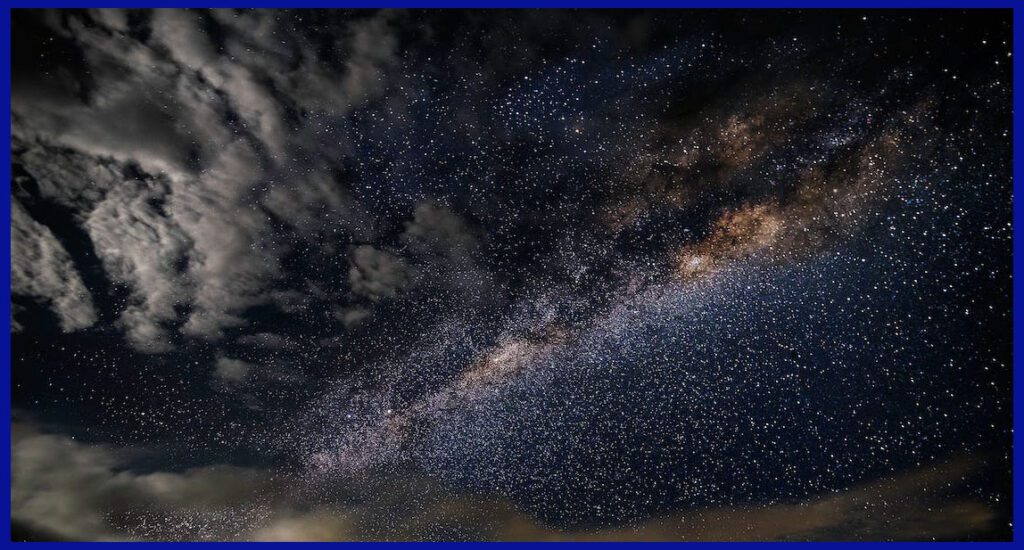
What Do You Know About Galaxies?
Galaxies are huge groups of stars, dust and gas, which are held together by gravity. Galaxies have billions of stars and the universe has billions of galaxies. Scientists believe that more than 100 billion galaxies exist in the Universe. Large galaxies have more than a trillion stars. The solar system is in a galaxy called the Milky Way.
Our own galaxy, the Milky Way, is a barred spiral galaxy that contains an estimated 100 billion stars. It is located about 26,000 light-years away from the centre of the galaxy and is part of a group of galaxies known as the Local Group.
Galaxies are thought to have formed through the process of accretion, in which smaller structures such as gas clouds and dwarf galaxies are pulled together by gravity to form larger structures. The precise details of galaxy formation and evolution are still not fully understood, and the subject is an active area of research in astrophysics.
Galaxies play an important role in the structure and evolution of the universe. They are the building blocks of larger structures such as galaxy clusters and superclusters, and they are thought to have played a key role in the formation of elements such as carbon, nitrogen, and oxygen. The study of galaxies provides important insights into the history and structure of the universe as a whole.
Group Of Galaxies: Some galaxies are found far from each other while others are found in pairs. The galaxies that are found in pairs orbit each other. Most galaxies are seen in groups known as clusters. A cluster can have a few dozen to several thousand galaxies.
Size Of Galaxies: The Universe is full of galaxies, and all of them are different sizes. Some of the galaxies are small and can hold less than a billion stars. Others are larger and can hold more than a trillion stars.
Spiral Galaxies: Spiral galaxies have a bulge in the centre, which is surrounded by bright spiral arms. In spiral galaxies, new stars continually form from dust and gas. The Milky Way is an example of a spiral galaxy.
Elliptical Galaxies: Elliptical galaxies are bright shining galaxies that are found endlessly throughout the Universe. Very few new stars are formed in elliptical galaxies and most are made up of old stars.
Few Facts _
- Supernovae can be used to measure the distance of galaxies that are 10 billion light years away.
- In an elliptical galaxy, the light is the brightest in the centre.
- A spiral galaxy looks like a big pinwheel in the sky.
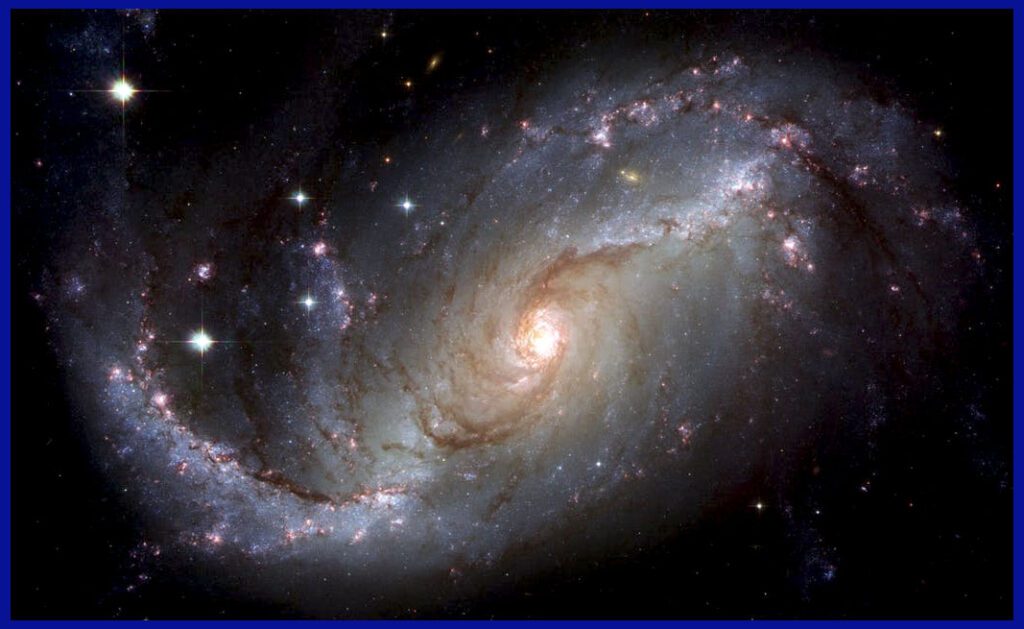
What Do You Know About the Nebulae and Their Types?
A nebula is a dense cloud of gas and dust in space. Stars begin their life in a nebula. Nebulae have star-forming regions where gas, dust and other materials clump together to form masses that are large enough to form stars, planets and celestial objects. Nebuleu is of two types — diffuse nebulae and planetary nebulae.
Nebulae play an important role in the formation of new stars. As clouds of gas and dust collapse under their own gravity, they can form dense regions that eventually become protostars. Over time, these protostars can grow and evolve into fully-fledged stars, and the surrounding gas and dust can be swept up and incorporated into new planets and other celestial bodies.
Nebulae are also important subjects for scientific study. By analyzing the composition and structure of nebulae, astronomers can gain insights into the processes that drive star formation and the history of the universe as a whole.
Cat’s Eye Nebula: The Cat’s Eye Nebula is a planetary nebula. This nebula looks like a blue disc. It Lies in the northern installation of Draco. It is one of the most complex nebulae because it has knots, jets, and wiry arc-like features.
Great Nebula: The Great Nebula is an emission nebula in the constellation Orion. It is a huge cloud of dust and gas with a bright central area. This nebula is also known as the Orion Nebula and is around 1,500 lightyears away from the Earth.
Diffuse Nebulae: Diffuse nebulae are wide clusters of dust and gas. Some diffuse nebulae contain enough dust and gases to form as many as 100,000 Sun-like stars. They are found near very hot and bright stars or near cool stars. Diffuse nebulae are of three types– emission, reflection and dark nebula.
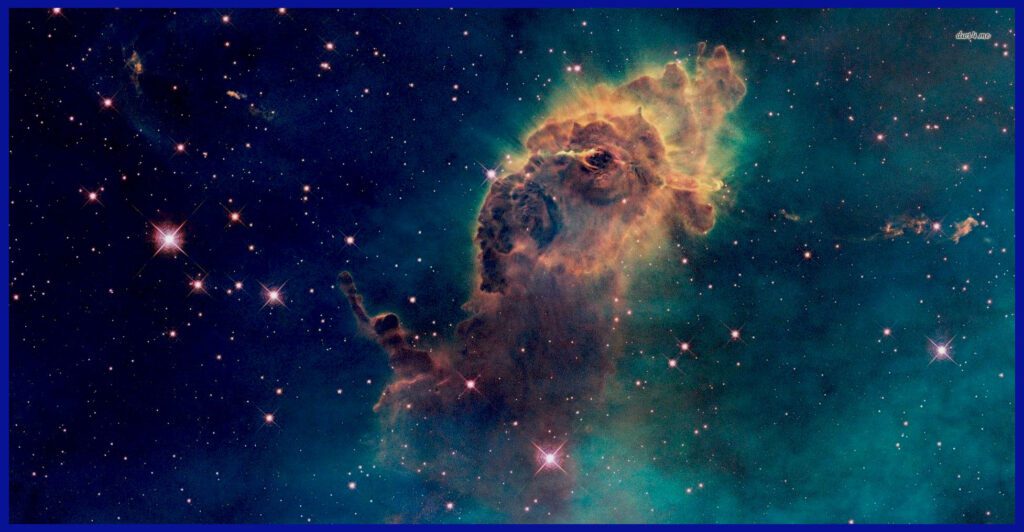
What Do You Know About The Milky Way?
The Milky Way is our home galaxy. It is a spiral galaxy with long arms, which spin around in space. The Sun and most of the stars that we see at night are located in the arms of the Milky Way. There are more than 100 billion stars in the Milky Way.
Our Solar System is located on one of the spiral arms of the Milky Way, about 25,000 light-years from its centre. The Milky Way has a massive black hole at its centre, which is believed to be about 4 million times more massive than the Sun. The galaxy is also surrounded by a halo of dark matter, which cannot be directly observed but is inferred from its gravitational effects.
The Milky Way is named for the band of diffuse light that stretches across the night sky, which is caused by the concentration of stars and gas in the galactic plane. The study of the Milky Way and other galaxies is a fundamental area of research in astronomy and astrophysics.
How big is the Milky Way? _ The Milky Way is over 100,000 light-years wide. It is so large that the Sun takes around 250 million years to complete an orbit around the Milky Way. The solar system is about 25,000 light years away from the centre of the Milky Way.
Milky Way System _ The dust and gas of the Milky Way is arranged into three components– halo, disc and centre. The halo is the spherical distribution of the galaxy with the oldest stars. The disc includes the Sun: all the gases and dust: and most of its stars. The Center of the galaxy is called the nuclear bulge or galactic centre.
Inside the Milky Way _ The Milky Way is a collection of stars, planets, asteroids, meteoroids and gas. The solar system lies within the Milky Way. The centre of the galaxy looks brighter because stars are more closely packed together there.
Few Facts _
- It would take more than 3,000 years to count all stars in the Milky Way.
- Outside the Milky Way, we can see only three galaxies with the unaided eye.
- The Milky Way looks like a large pinwheel rotating in space

What is The Solar System?
The solar system includes the Sun and other celestial bodies. The Sun lies at the centre of the solar system. Orbiting around the Sun are the major planets ( The eight planets are, in order of their distance from the Sun: Mercury, Venus, Earth, Mars, Jupiter, Saturn, Uranus, and Neptune. Pluto was formerly considered a ninth planet, but it has since been reclassified as a “dwarf planet.” ); its moons; are asteroids, comets and meteoroids. The solar system was formed more than four billion years ago.
In addition to the planets, the Solar System also contains dwarf planets, asteroids, comets, meteoroids, and other objects. Most of the objects in the Solar System orbit the Sun in a flat plane called the ecliptic. The Solar System formed about 4.6 billion years ago from a giant cloud of gas and dust called the solar nebula.
The study of the Solar System is an important area of research in astronomy, and it has contributed greatly to our understanding of the universe.
How was the solar system formed? _ Our solar system was formed from a large cloud of gas and dust known as the solar nebula. When the solar nebula began to collapse due to its own gravity, it formed a disc. The particles inside the disc collided and stuck together to form small objects. Some of them combined to form planets while others formed moons, meteoroids, asteroids and comets.

The Solar System formed about 4.6 billion years ago from a giant cloud of gas and dust called the solar nebula. The exact details of the formation process are not yet fully understood, but scientists have developed a theory called the nebular hypothesis that explains the basic steps involved.
According to the nebular hypothesis, the Solar System formed when a nearby supernova explosion triggered the collapse of a dense region of the interstellar medium, causing it to contract and form the solar nebula. Over time, the solar nebula became flattened and began to rotate, with most of its mass concentrated at the centre to form the protosun.
As the protosun grew in mass and temperature, it began to emit energy in the form of heat and light, which eventually blew away the gas and dust from its immediate surroundings, leaving behind the inner planets. The outer planets formed farther away from the Sun where it was cooler, allowing ice and other volatile compounds to condense and form solid bodies that were massive enough to begin accumulating gas from the surrounding solar nebula.
Overall, the formation of the Solar System was a complex process that took millions of years, and scientists continue to study it in order to gain a deeper understanding of how the universe evolves.

What Are Dwarf Planets? Dwarf planets are celestial bodies which look like planets but are much smaller. Unlike planets, they do not have enough gravity to clear other objects from their orbits. Pluto is an example of a Dwarf planet.
What Is Orbit? The Sun is in the centre of the solar system and all other objects orbit around it. Planets, meteoroids and asteroids move in their respective orbits. However, all planets move around the Sun in an anticlockwise direction.
The shape of an orbit can vary depending on the initial conditions of the object’s motion and the strength of the gravitational force it experiences. Some orbits are nearly circular, while others are more elongated or elliptical in shape. The time it takes for an object to complete one orbit is called its orbital period.
Orbits play a critical role in our understanding of the universe, as they allow us to study the properties and behaviour of objects in space. They also have important practical applications, such as predicting the motion of satellites, planning interplanetary missions, and studying the effects of gravity on human health.
Few facts _
- Astronomers have discovered that more than 50 stars, like our Sun, have planets orbiting them.
- Mercury has the shortest orbit while Neptune has the longest orbit among all planets.
- Many dwarf planets and asteroids also have smaller moons.
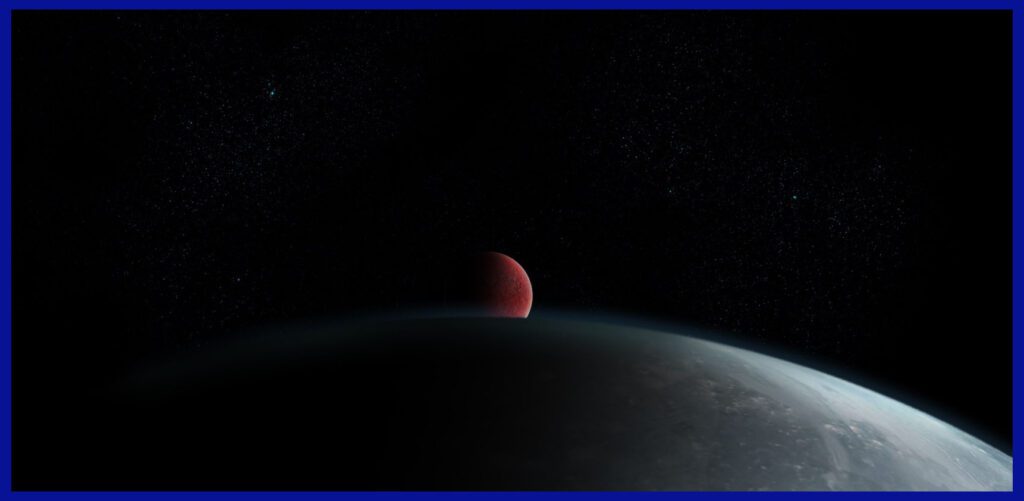
What are Black Holes and Quasars?
A black hole is a region in space where the gravitational pull is so strong that nothing, not even light, can escape it. It is created when a massive star dies and its core collapses under the force of its own gravity. Black holes are invisible, as they do not emit any light, but their presence can be detected by observing the effects of their gravity on nearby stars and gas. Scientists believe that there is a supermassive black hole at the centre of each galaxy.
Sagittarius A* ( Sgr A* ) is probably a supermassive black hole at the centre of the Milky Way Galaxy. Scientists believe that the black hole is about four million times more massive than the mass of the Sun.
A quasar, on the other hand, is a type of active galactic nucleus that is powered by a supermassive black hole at the centre of a galaxy. As matter falls into the black hole, it releases enormous amounts of energy in the form of light and other radiation. Quasars are some of the most luminous objects in the universe and can be observed across vast distances. They give off a lot of energy and are a trillion times brighter than the Sun.
Quasars are small brightly shining objects. They are billions of light years away from the Earth. Quasars get their energy from massive black holes, which are at the centre of the quasar’s galaxy. Quasars use their energy to shine brightly and they mask out the light from all of the other stars in the galaxy.
How are black holes formed? Black holes are formed when massive stars run out of nuclear fuel and get crushed by their own gravitational force. This makes them unable to support their own weight and their core collapses, which forms a black hole.
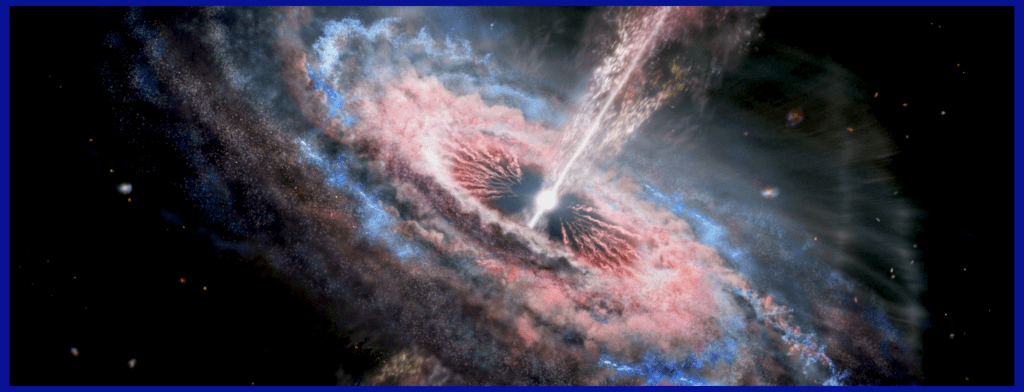
In conclusion, within the tapestry of time spanning 13.8 billion years, our cosmic expedition has uncovered glimpses of the universe’s grandeur. Celestial galaxies of stars, those magnificent galaxies, have woven intricate stories across the canvas of space. Amidst the hum of cosmic microwave echoes, the universe’s birth song still lingers. However, dark matter’s silent embrace and dark energy’s enigmatic pull remind us of the uncharted realms that lie within.
Stars, which serve as beacons of cosmic tales, give birth to both beauty and mystery as they either collapse into black holes or gracefully dance as neutron stars. Cosmic inflation, a choreography of expansion, sets the stage for existence. As our journey continues, we reach out to grasp the threads of understanding, humbled by the vastness and complexity that envelop us. With awe, we stand at the crossroads of knowledge and curiosity, fully aware that the cosmos still holds a symphony of secrets waiting to be unveiled.
Furthermore, an essential piece of information demands attention beyond the scope of this article. Do not overlook the opportunity to seize an exclusive chance to own your very own collection of awe-inspiring, extra-large 1/125 resin scale premium models featuring the Air France Concorde. These exceptional aircraft, available exclusively through Air Models with worldwide delivery, embody sheer excellence and have gained renown for their unparalleled significance in the realm of the world’s first supersonic passenger plane. Act now to secure your piece before the limited stock is depleted.

Important Announcement for Our Valued Readers!
After an article is published, it is possible that updates or changes may have occurred beyond the time of publication. Therefore, it is important to be aware that certain information in the article might be outdated. To ensure the most accurate analysis, it is highly recommended to verify the content with the latest sources available.
However, we are dedicated to delivering outstanding articles on military products and global updates. Maintaining quality and smooth operation requires resources. Your support sustains our efforts in providing insightful content. By purchasing high-quality products through our affiliated links, you help us keep our platform alive and acquire top-notch items. Your unwavering support is invaluable and inspires us to strive further.
We welcome your suggestions and requests for more information, as we value feedback from our readers. If there’s specific defence material or equipment not covered on our site, please share your request in the comments. We’ll strive to research and provide the required information. We sincerely thank you for your unwavering interest in our website, and we eagerly anticipate hearing from you! Enjoy your reading experience!
